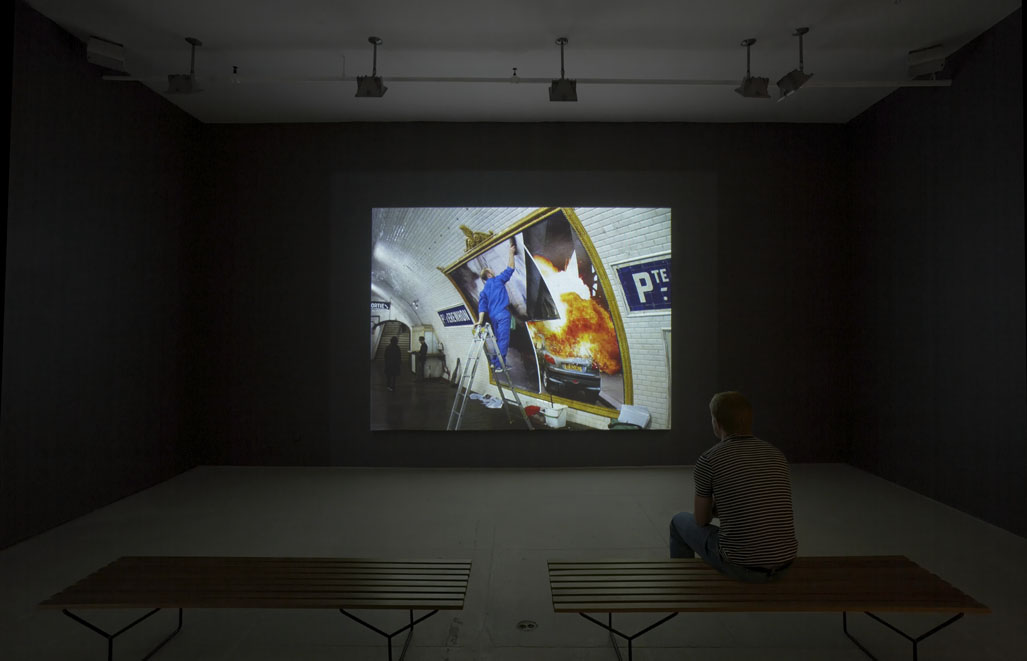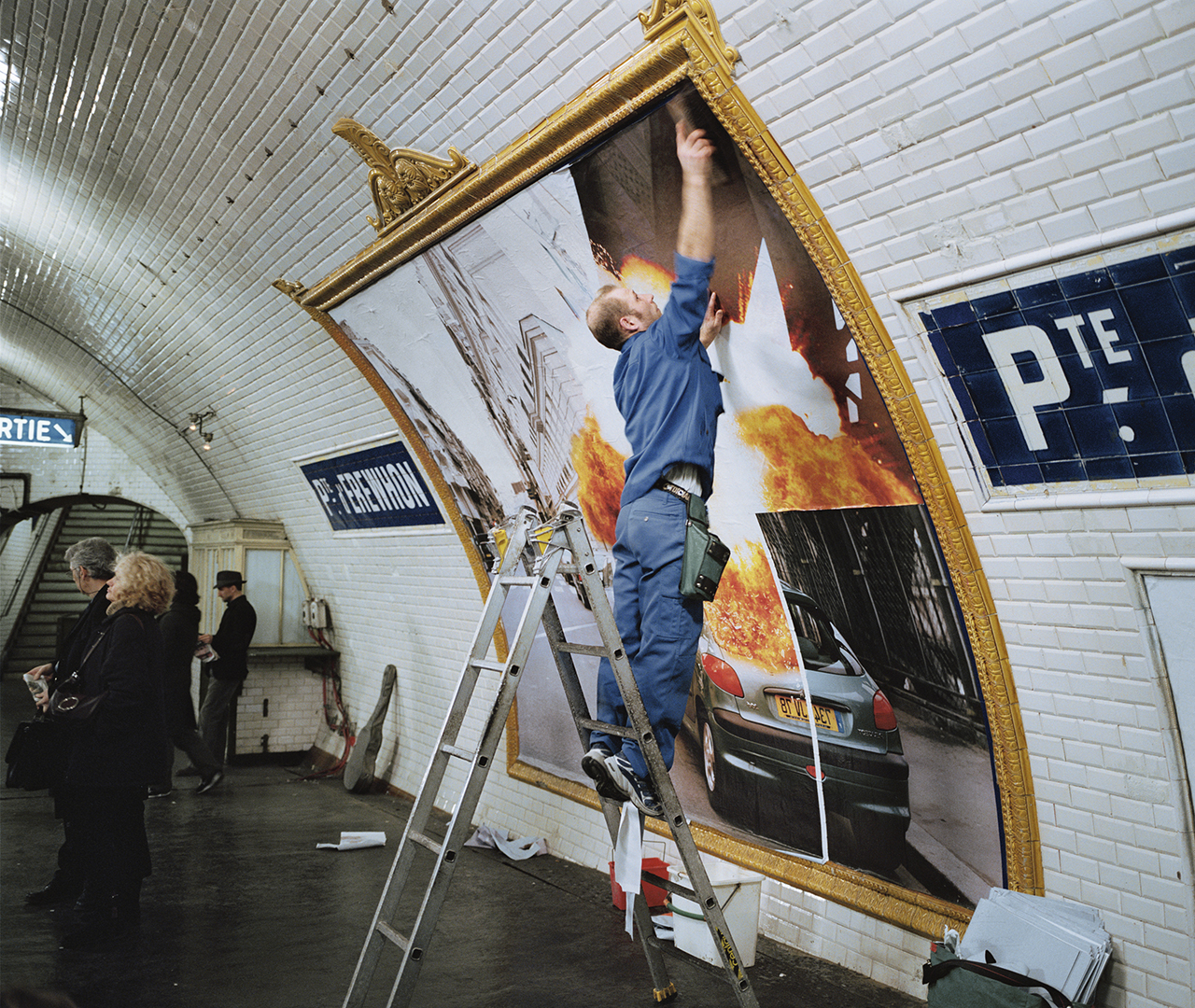
Sugar Water 2007
HD video projection
72 minutes
Part of the Circumambulation cycle







Henri Bergson, who didn’t care much for cinema, wrote in Creative Evolution that in order to have an authentic intuition of duration, one had to experience it, and he took the example of sugar in a glass of water.
The lesson seemed clear: “I must wait for the sugar to dissolve;” it is in the experience of vision and waiting, when my duration blends with that of the world, that the intuition of a moving reality emerges. But how does one learn to wait in a modern world that seems to be a constant flux of continuous images, yet never ceases to extract stopped images, obsessive images, and then projects these fixed images into what seems to be a perpetual cycle? ‘Sugar Water’ can in a sense be seen as a vast metaphor of the days that followed September 11th experienced like a challenge to Bergson’s edict: the same fixed images, almost like advertisements, constantly cycling in the very heart of our daily lives, until they produce a perfect misunderstanding: we wait to see the moment where the car explodes, while the “real people” in the film (for the most part) simply await the metro and don’t see anything at all. But it can also be read as something else entirely: the daily nature of violence, of advertising, devoid of subject, void of significance, with the same PA announcements and the same barely audible song that create the rhythm of the sound track, in a cycle that mirrors the sequence of images overlapping on top of the blue monochrome of a billboard frame. How does the time spent waiting for the next image to reveal itself become something else than a repetitive old tune? Here, a sort of portrait of the artist as a billposter • Pierre Zaoui, On the Communication of Events
The lesson seemed clear: “I must wait for the sugar to dissolve;” it is in the experience of vision and waiting, when my duration blends with that of the world, that the intuition of a moving reality emerges. But how does one learn to wait in a modern world that seems to be a constant flux of continuous images, yet never ceases to extract stopped images, obsessive images, and then projects these fixed images into what seems to be a perpetual cycle? ‘Sugar Water’ can in a sense be seen as a vast metaphor of the days that followed September 11th experienced like a challenge to Bergson’s edict: the same fixed images, almost like advertisements, constantly cycling in the very heart of our daily lives, until they produce a perfect misunderstanding: we wait to see the moment where the car explodes, while the “real people” in the film (for the most part) simply await the metro and don’t see anything at all. But it can also be read as something else entirely: the daily nature of violence, of advertising, devoid of subject, void of significance, with the same PA announcements and the same barely audible song that create the rhythm of the sound track, in a cycle that mirrors the sequence of images overlapping on top of the blue monochrome of a billboard frame. How does the time spent waiting for the next image to reveal itself become something else than a repetitive old tune? Here, a sort of portrait of the artist as a billposter • Pierre Zaoui, On the Communication of Events
MORE RESSOURCES
- Tan Lin, Éric Baudelaire's “Sugar Water”, the Deleuzean Event, and the Dispersion of Spectatorial Labour, Reading Room, 2008
- Sugar Water, Onestar Press, 2010